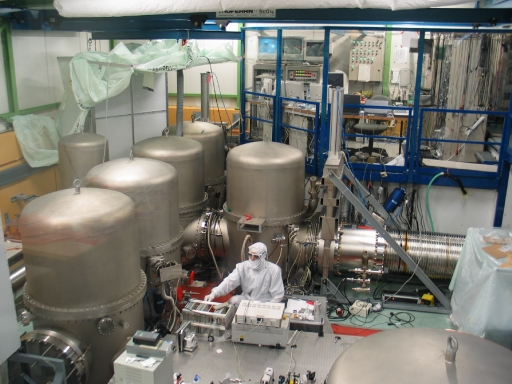If there were air to surround them, the test masses of the interferometric detectors would be subject to countless little collisions with air molecules. Also, the air would scatter the laser light used to monitor the distance between the test masses. For both reasons, the test masses and the laser light running between them are put into vacuum tanks.
The image on the left shows the interior of the central building of the detector GEO 600. Clearly visible are several vacuum tanks; one of them contains the beam splitter that sends part of the laser light into one arm (in the image: towards the top), part into the other (in the image: towards the right). The movie shown on the following page shows work on the suspensions and within the vacuum tanks of GEO 600, and also an exterior view.
 Scene
Scene


 1st Slide
1st Slide
 Branching Point
Branching Point
 Module: Astrophysik: Gravitationsdetektoren
Module: Astrophysik: Gravitationsdetektoren Sequence: Gravitationswellendetektoren Einstieg
Sequence: Gravitationswellendetektoren Einstieg Branching Point: Gravitational wave detectors
Branching Point: Gravitational wave detectors Slide: Detecting gravitational waves
Slide: Detecting gravitational waves Back
Back


